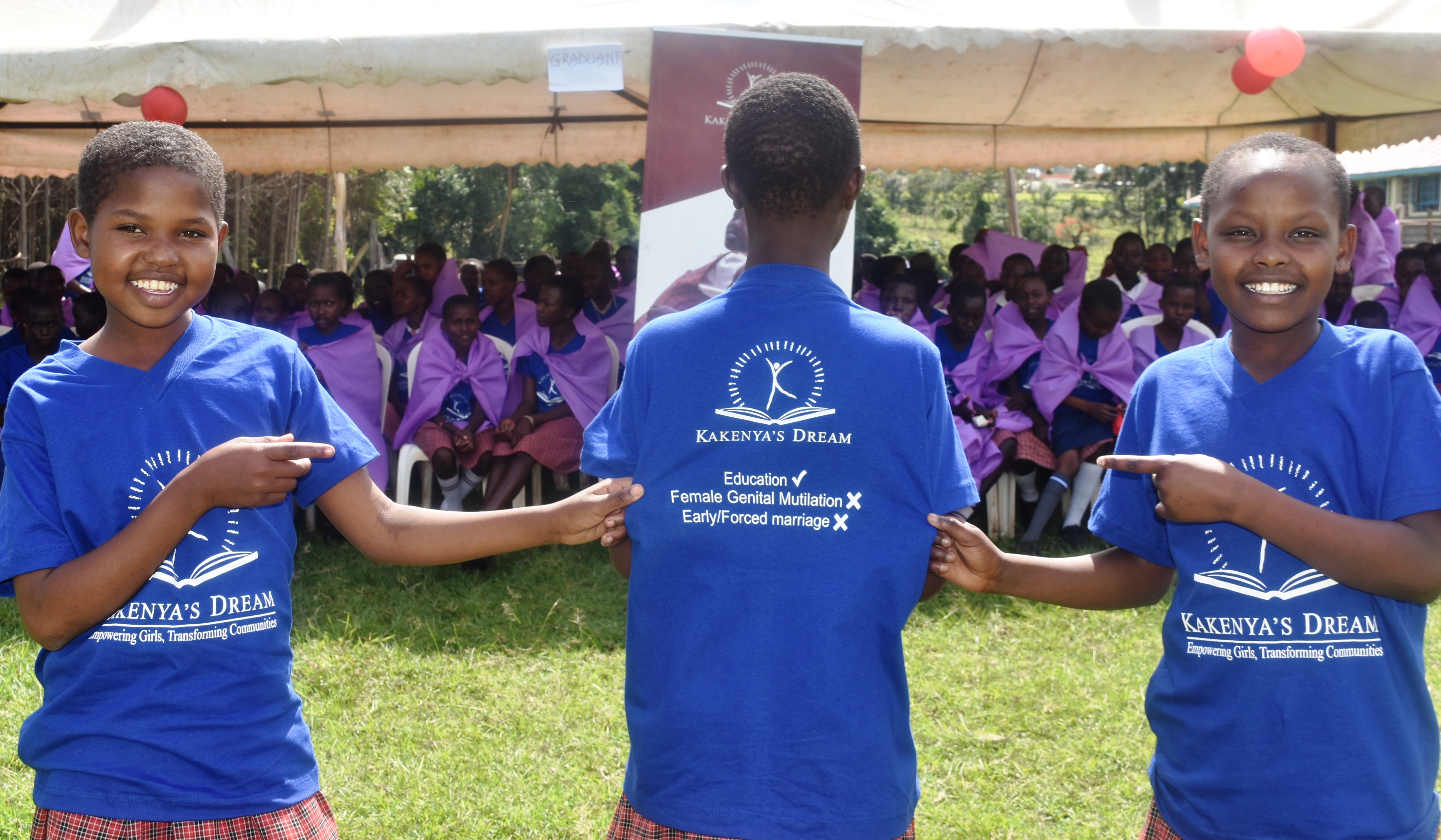
Mission
Kakenya’s Dream (KD) leverages education to empower girls and transform rural communities. They believe every girl, no matter where she is born, deserves a chance to dream, learn, and achieve her full potential.
Life Challenges of the Women Served
The beneficiaries of Kakenya’s Dream are Maasai girls ages 8-20. Nearly all are from Narok County, a rural, marginalized area of the country. Maasai girls continue to face many challenges in Kenya, particularly in remote areas, including a lack of agency within the family and community. Sexual and reproductive health are not discussed openly, even though sexual violence, FGM/C (Female Genital Mutilation/Cutting), and early forced marriage are common.
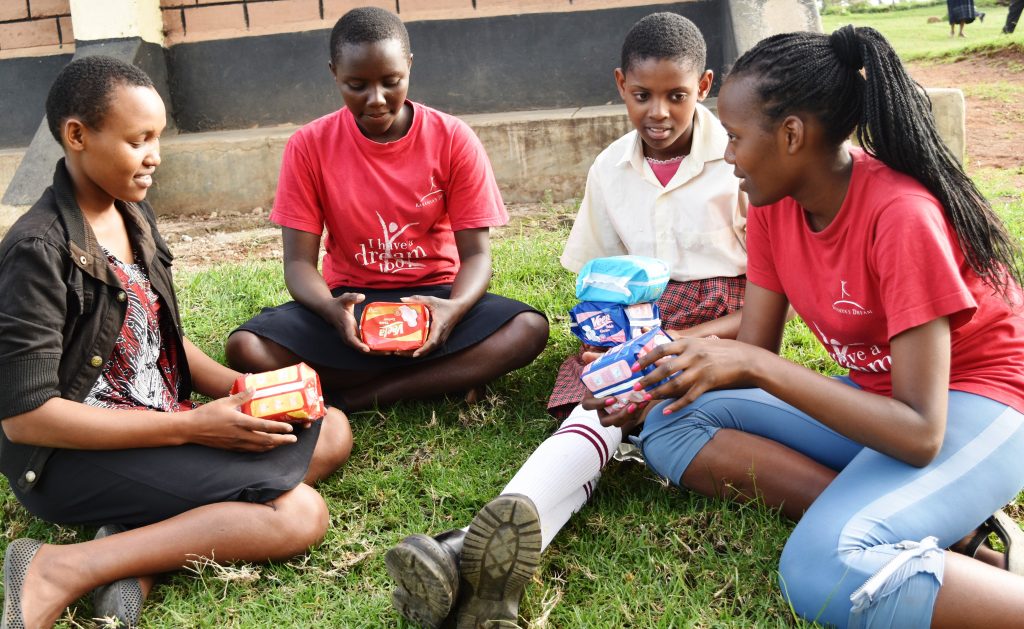 The lack of sexual health and rights education affects the entire population across Narok County. It leads to higher rates of sexually transmitted diseases, lower educational attainment, and higher rates of teen pregnancy. According to the Ministry of Health, Narok County has the highest rate of teen pregnancy in the country, with 40 percent of girls between the ages of 15 and 19 having already given birth to at least one child. This is more than twice the national average of 18 percent.
The lack of sexual health and rights education affects the entire population across Narok County. It leads to higher rates of sexually transmitted diseases, lower educational attainment, and higher rates of teen pregnancy. According to the Ministry of Health, Narok County has the highest rate of teen pregnancy in the country, with 40 percent of girls between the ages of 15 and 19 having already given birth to at least one child. This is more than twice the national average of 18 percent.
Girls are often viewed as economic assets to help with chores and family economic activities, and their education is not a priority. In the organization’s region, over 80 percent of girls undergo FGM/C when they reach puberty, after which they enter into an arranged marriage, ending their education before even completing primary school. Despite Kenyan laws that prohibit these practices and enforce the right of every child to basic education, only 17 percent of girls in the community attain a primary education, and one in two girls are married before the age of 19. The challenges girls in the region face perpetuate cycles of poverty, low educational achievement, pervasiveness of HIV/AIDS, high teenage pregnancy rates, and high rates of infant and maternal mortality.
The practices of FGM/C and forced marriage have been in place for many generations. These customs have deep roots in culture and history. For centuries, they have been considered social norms enforced by community expectations around marriageability. By having a daughter cut, the family ensures that she will be a desirable marriage prospect. Lack of information about the negative impact of these practices and the value of educating girls rather than cutting them and marrying them off perpetuates the practices. Furthermore, most families have limited economic resources, so they use what they do have to educate their sons. It is assumed that girls will leave school to become wives and mothers when they reach puberty, so their education has not been a priority for family or community investment.
The Project
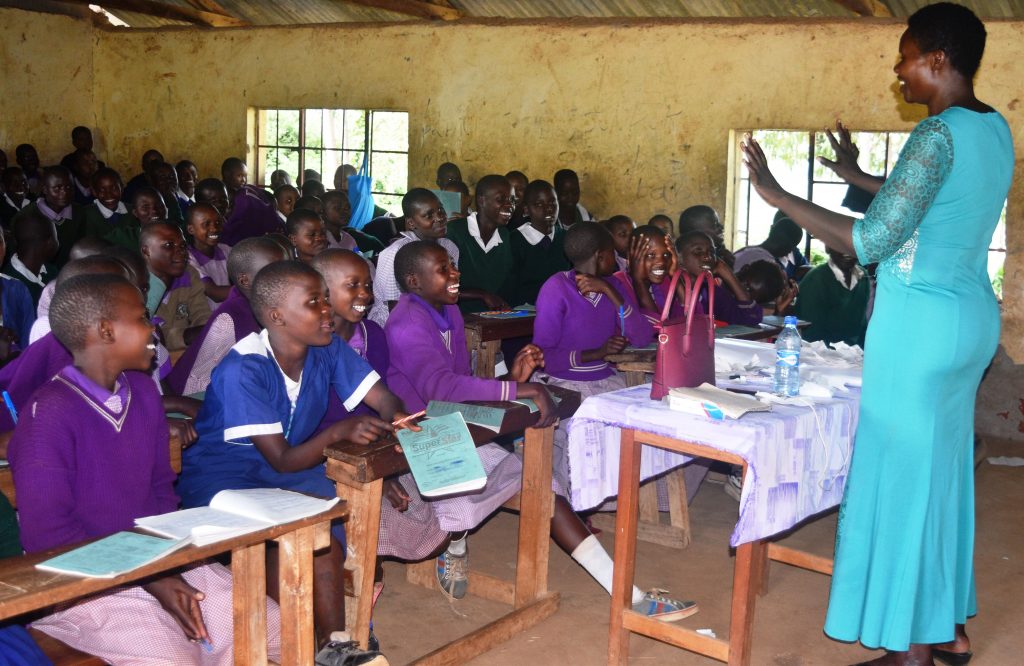 Though the consequences of these stated problems impact the entire community, Kakenya’s Dream programs focus primarily on educating and empowering girls between the ages of 10 and 14, which is the period when they become most vulnerable to harmful practices, sexual violence, and other barriers to education.
Though the consequences of these stated problems impact the entire community, Kakenya’s Dream programs focus primarily on educating and empowering girls between the ages of 10 and 14, which is the period when they become most vulnerable to harmful practices, sexual violence, and other barriers to education.
The Health and Leadership Training Program was created in order to address the need for health and rights education among young people in Narok County and to foster positive change. The goals of the program are that more girls are aware of and can protect their rights, including bodily integrity and freedom from violence, and to see changes in social norms related to human rights of girls and young women, resulting in elimination of FGM/C, reduction in child marriages, and increased support for girls’ education.
This project will focus on three activities:
- Weekend Trainings:
In 2019, a total of eight weekend trainings will be conducted with students from 24+ different schools. At each training, between 300 and 500 students will participate. The expectation is to train a minimum of 3,000 students through these weekend sessions throughout 2019.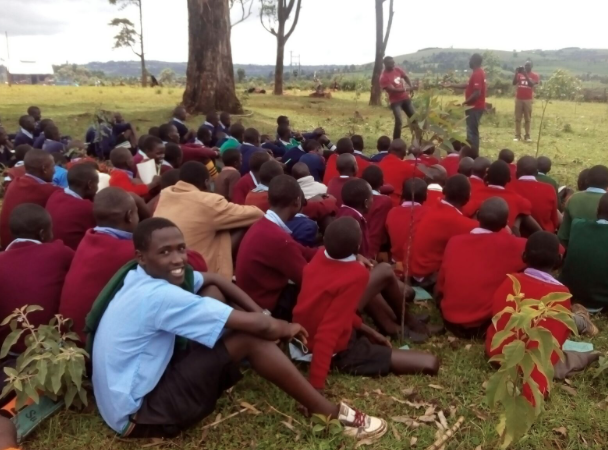 In 2017, boys began to be invited to participate in the weekend camps. These trainings are viewed as a valuable way for boys to learn about their own rights and health, especially when it comes to HIV and other STIs, and also as a way to learn about the barriers faced by their female peers. Since many of these topics are not openly discussed in school or at home, boys are often unaware of the struggles girls face due to menstruation, FGM/C, and child marriage. On average, about 60 percent of participants at these co-ed trainings are girls and about 40 percent are boys.
In 2017, boys began to be invited to participate in the weekend camps. These trainings are viewed as a valuable way for boys to learn about their own rights and health, especially when it comes to HIV and other STIs, and also as a way to learn about the barriers faced by their female peers. Since many of these topics are not openly discussed in school or at home, boys are often unaware of the struggles girls face due to menstruation, FGM/C, and child marriage. On average, about 60 percent of participants at these co-ed trainings are girls and about 40 percent are boys.
- Week-long Trainings:
Two week-long camps will be hosted during school holidays in 2019, drawing students primarily from the Keyian Division and hosted at KD’s primary boarding school for girls, the Kakenya Center for Excellence (KCE), located in Enoosaen, in Narok County, Kenya. The week-long camps continue to be open for girls only, and thus they provide a safe space to go more in-depth on a wide variety of topics. Each one welcomes up to 300 girls from 50+ schools. As with the weekend trainings, the beneficiaries are from rural, underserved areas.
- Peer-to-Peer Component:
In 2019 a new component of the project will be launched to deepen impact by increasing the frequency and scope of the trainings. KD will identify and equip up to 100 college students and recent college graduates to deliver the curriculum to students around the region. Throughout the year, four sessions for the peer trainers will be hosted, qualifying them to deliver the unique Health and Leadership Training curriculum. The peer-led trainings will be held in partner schools on a weekly basis instead of just once a year, providing sustained support and learning for thousands of vulnerable youth.
Impact:
Direct – 3,500, Indirect – 7,000
UN Sustainable Development Goals:
![]()
![]()
![]()
Questions for Discussion
- How does this project promote self-sufficiency for women and girls?
- How do you think the inclusion of boys in the weekend trainings helps achieve the project’s goals?
- In what way will the peer-to-peer component affect the sustainability of the project?
How the Grant Will be Used
DFW’s grant of $45,000 for one year will be used for the following:
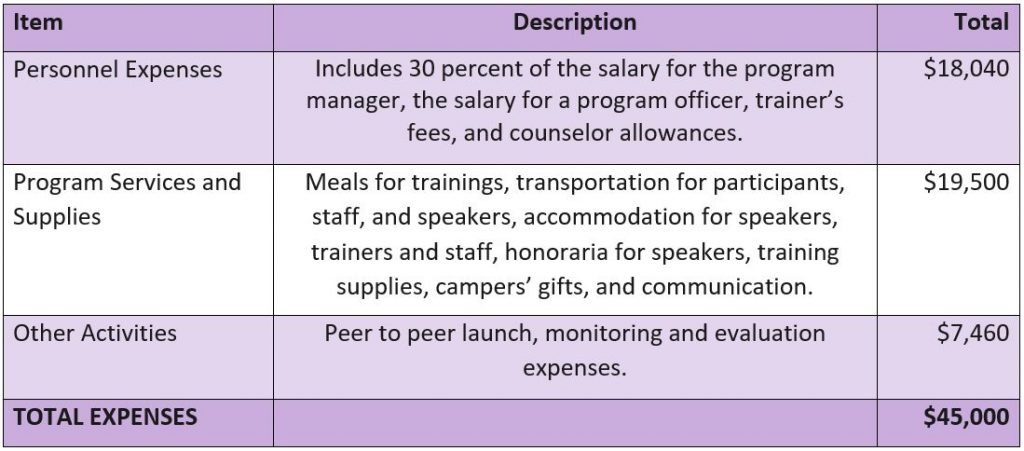
Why We Love This Project/Organization
We love this project’s focus on empowering young Maasai girls who are at risk for Female Genital Mutilation/Cutting (FGM/C) and early marriage to stay in school, learn about sexual and reproductive health, child rights, and life skills through girl-centered programming.
Evidence of Success
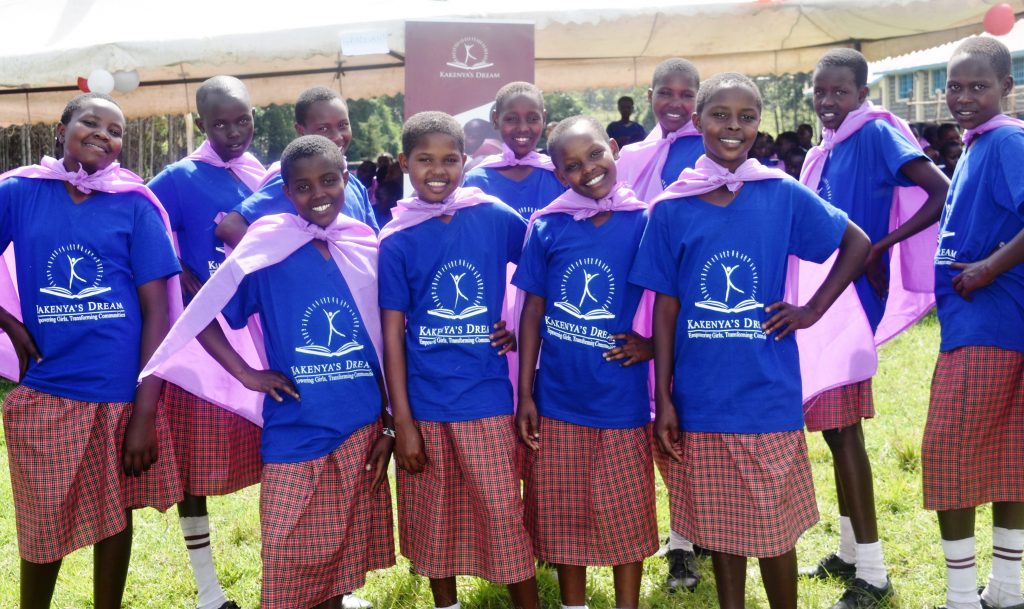 All of KD’s students progressed to the next grade level in January 2018, which means 319 girls stayed in school another year as a result of their programs.
All of KD’s students progressed to the next grade level in January 2018, which means 319 girls stayed in school another year as a result of their programs.- 100 percent of students at the school are free from FGM/C and child marriage compared to half of girls in the surrounding region who are still married as children and 80 percent of Maasai girls who undergo FGM/C.
- Students are performing among the top in the district, consistently achieving the highest average scores on benchmarking exams.
- KD has trained over 10,000 youth at 60 schools across the region on sexual and reproductive health, child rights, and life skills.
KD has gathered a wide array of anecdotal evidence of the program’s profoundly positive impact in schools, homes, and communities. Nevertheless, one of the greatest challenges they have faced over the course of this project is developing effective ways of measuring 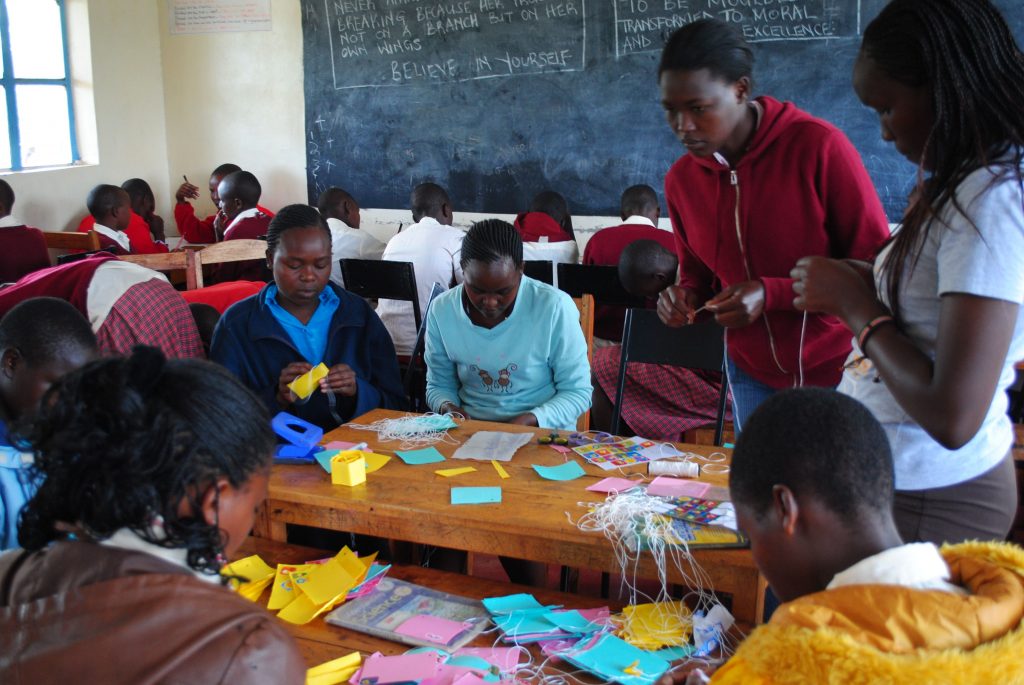 the long-term impact of the trainings on the program’s beneficiaries. While entrance and exit surveys are useful in tracking immediate impact of the program, a high priority in the coming year is to develop tools to track the program’s long-term impact.
the long-term impact of the trainings on the program’s beneficiaries. While entrance and exit surveys are useful in tracking immediate impact of the program, a high priority in the coming year is to develop tools to track the program’s long-term impact.
To address this issue, KD has recently established a partnership with the University of Pittsburgh’s business school, who have committed to providing pro-bono consulting services in the development of new monitoring and evaluation tools both for the boarding school and Network for Excellence (holistic support for Center for Excellence alumnae as they make the critical transition to secondary school) programs as well as the Health and Leadership Training program.
Voices of the Girls
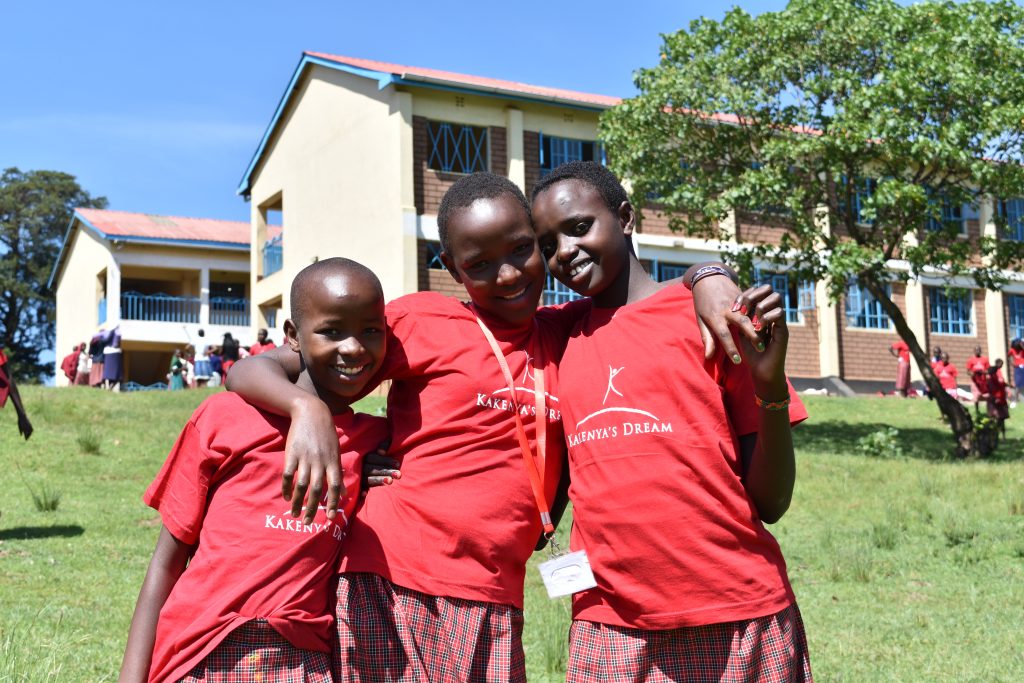 Health and Leadership camps have also motivated me and helped me to be more aware about myself and my rights. When I grow up, I would like to volunteer to help other Maasai girls to achieve their goals and help to fight for their rights.
Health and Leadership camps have also motivated me and helped me to be more aware about myself and my rights. When I grow up, I would like to volunteer to help other Maasai girls to achieve their goals and help to fight for their rights.
–Sylvia, age 14
At the camps, we are learning how to fight for girls’ rights and work to end FGM and child marriage. Girls have a right to an education, and they have a right to life. Whenever their parents don’t listen to them, they should look for other people who can help them.
– Faith, age 13
I have learnt about self-defense and know that FGM is harmful to girls. Kakenya’s Dream has helped me to believe in myself more and know that I can achieve anything I want.
– Elizabeth, age 16
My favorite part of being at KCE are the Health and Leadership Training camps. I am learning about how to become a good public speaker. I like KCE because they are training us to be future leaders like Kakenya is.
– Faith, age 13
About the Organization
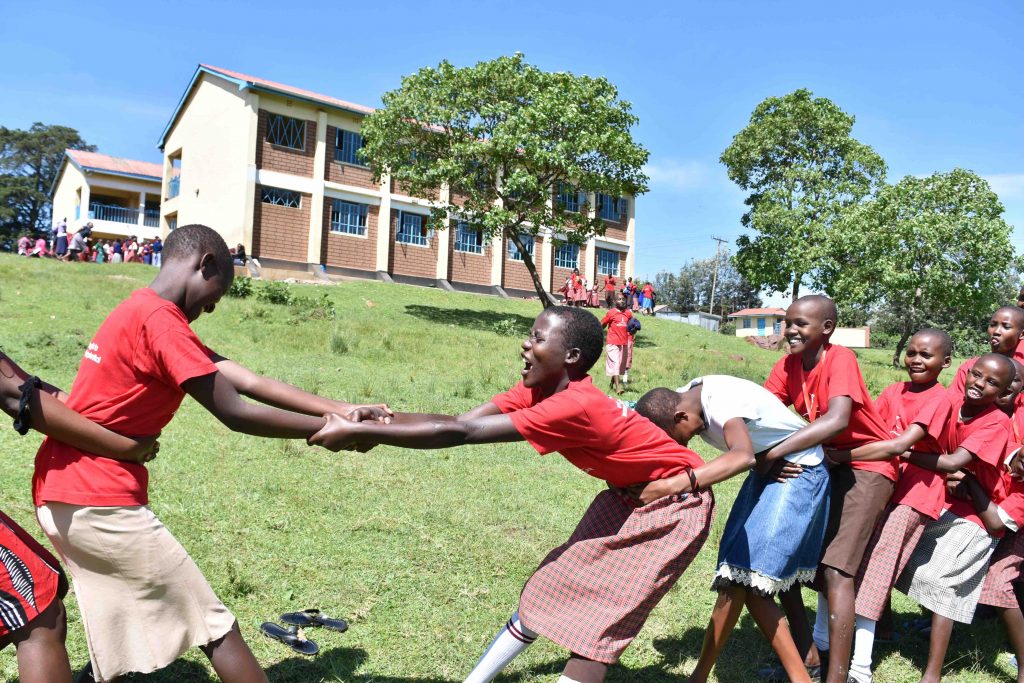 Kakenya’s Dream was founded in 2008 by Dr. Kakenya Ntaiya. (Watch her recent TED talk here.) It began as a primary boarding school for girls, the Kakenya Center for Excellence, with a single class of 4th graders. Kakenya founded the organization as a way to uplift her rural community, having overcome adversity to become the first girl from Enoosaen to leave the village and attend college in the U.S. Since the doors to the school opened in 2009, Kakenya’s Dream has grown into three interconnected programs, including the school, the Network for Excellence, which supports KCE alumnae through secondary school and beyond, and the Health and Leadership Training program, which reaches youth across the community with crucial information and skills training.
Kakenya’s Dream was founded in 2008 by Dr. Kakenya Ntaiya. (Watch her recent TED talk here.) It began as a primary boarding school for girls, the Kakenya Center for Excellence, with a single class of 4th graders. Kakenya founded the organization as a way to uplift her rural community, having overcome adversity to become the first girl from Enoosaen to leave the village and attend college in the U.S. Since the doors to the school opened in 2009, Kakenya’s Dream has grown into three interconnected programs, including the school, the Network for Excellence, which supports KCE alumnae through secondary school and beyond, and the Health and Leadership Training program, which reaches youth across the community with crucial information and skills training.
KD is registered as a 501(c)3 in the U.S and as a community-based organization and a trust in Kenya. Kakenya has received a number of awards for her advocacy for women and girls’ education and rights. In 2013, she was honored by the Global Women’s Rights Award by the Feminist Majority Foundation, was recognized by Women in the World as a “Women of Impact,” and named a Top Ten CNN Hero. She was honored with a Vital Voices Global Leadership award in 2008 and as a National Geographic Emerging Explorer in 2010. She was named one of Newsweek’s 150 Women Who Shake the World in 2011 and was counted among the Women Deliver 100: The Most Inspiring People Delivering for Girls and Women. Her story has been the subject of a Washington Post series, a National Geographic feature, a BBC documentary and many magazine articles.
Where They Work
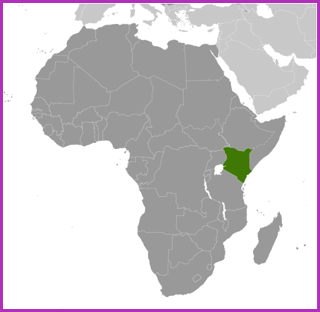
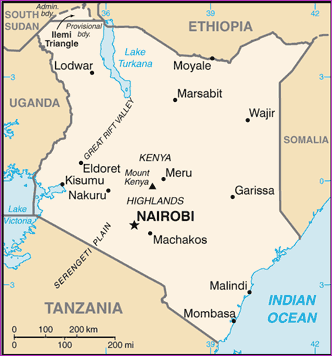
This project is based in Narok County, Kenya. Kenya is in Eastern Africa, bordering the Indian Ocean, between Somalia and Tanzania. The country is about five times the size of Ohio and slightly more than twice the size of Nevada.
The population of Kenya is more than 48 million (July 2018 est.). It is heavily concentrated in the west along the shore of Lake Victoria. Other areas of high density include the capital of Nairobi and in the southeast along the Indian Ocean coast. The country’s ethnicity is comprised of Kikuyu 17.2 percent, Luhya 13.8 percent, Kalejin 12.9 percent, Luo 10.5 percent, Kamba 10.1 percent, Somali 6.2 percent, Kisii 5.7 percent, Mijikenda 5.1 percent, Meru 4.3 percent, Turkana 2.6 percent, Masai 2.2 percent, and other 9.4 percent (2014 est.).
Kenya has experienced dramatic population growth since the mid-20th century as a result of its high birth rate and its declining mortality rate. More than 40 percent of Kenyans are under the age of 15 because of sustained high fertility, early marriage and childbearing, and an unmet need for family planning. Kenya’s persistent rapid population growth strains the labor market, social services, arable land, and natural resources. Although Kenya in 1967 was the first sub-Saharan country to launch a nationwide family planning program, progress in reducing the birth rate has largely stalled since the late 1990s, when the government decreased its support for family planning to focus on the HIV epidemic. Development challenges include poverty, inequality, climate change, and vulnerability of the economy to internal and external shocks.
The median age in Kenya is 20 years, with a life expectancy from birth of 64.6 years. The birthrate is 22.6 births/1,000 population (2018 est.). The maternal mortality rate is 510 deaths/100,000 live births (2015 est.), and the infant mortality rate is 36.1 deaths/1,000 births. The literacy rate for the total population is 78 percent, with 81.1 percent of males being literate and 74.9 percent of females (2015 est.). The number of people living with HIV/AIDS in Kenya is 1.5 million (2017 est.).
A Closer Look at Including Boys in Educational Programs for Girls
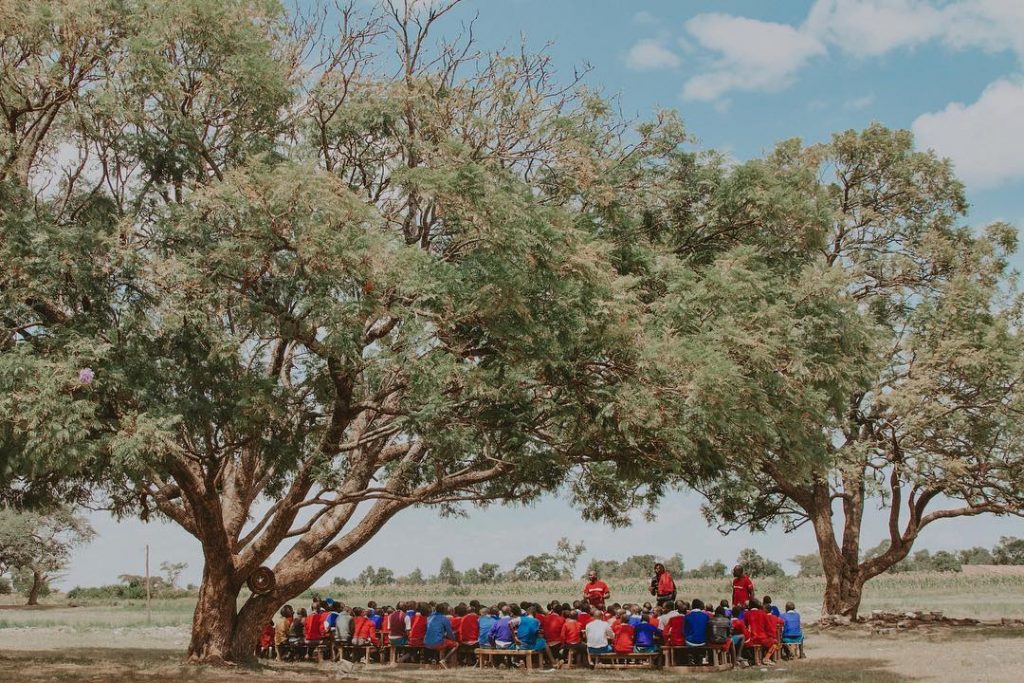 Kakenya’s Dream started including boys in their weekend trainings in 2017. This was a novel concept as traditionally programs for female empowerment focused just on girls. Women and girls face challenges that their male peers do not experience. In Kenya, that includes harmful traditional practices like FGM/C, lack of access to education and economic resources, and violence against women. Boys often receive preferential treatment — from larger portions at meals to greater support for their studies.
Kakenya’s Dream started including boys in their weekend trainings in 2017. This was a novel concept as traditionally programs for female empowerment focused just on girls. Women and girls face challenges that their male peers do not experience. In Kenya, that includes harmful traditional practices like FGM/C, lack of access to education and economic resources, and violence against women. Boys often receive preferential treatment — from larger portions at meals to greater support for their studies.
Because topics such as HIV, menstruation, FGM/C and child marriage are not openly discussed in school or at home, boys are often unaware of the barriers faced by their female peers. But boys become men, and since almost all societies are patriarchal, educating boys is crucial for gender justice. Including boys in certain training programs is a valuable way for boys to learn about their own rights and health issues such as HIV and other STIs. Learning how gender challenges affect societies, boys can learn how female empowerment is a catalyst for broad community transformations, including economic growth that benefits all.
Source Materials
